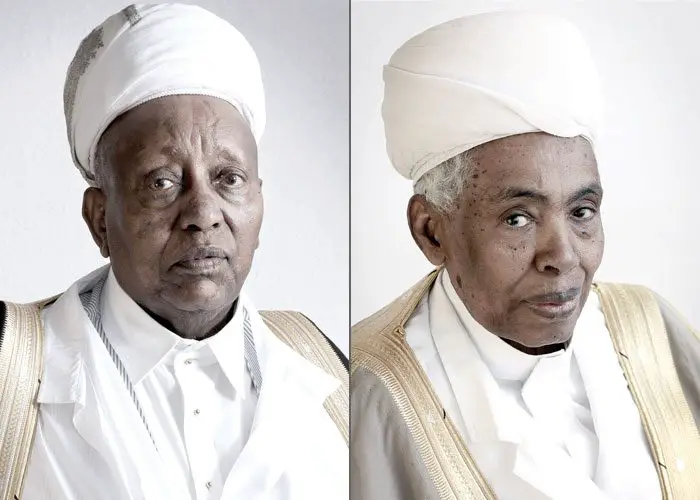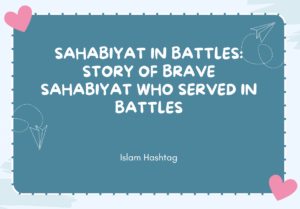Aghwat madinah, the Abyssinian Guardians of Masjid Nabawi
The Prophet’s Mosque is also known as Al-Masjid Al-Nabawi, where Prophet Muhammad(pbuh) is buried. This mosque represents one of the three oldest mosques in the world and is located in Medina.
The history of Masjid Nabawi is incomplete without the mention of the Guardians who have their own story.These Interesting People hail from Abyssinia .They are eununchs who love to live in seclusion.
Watch the History of Masjid Nabawi-Documentry
There are also known as Aghas or the aghwats .Agha is a non-Arabic word derived from Turkish. The Turkish word comes from the Old Turkic aqa, meaning “elder brother”. In Makkah and Madinah, the word was used to respectfully address people who were selected to serve in the holy mosques.
Who are the Guardians /Aghas or the Aghawat of Masjid Nabawi?
The Guardians /Aghas, or eunuch servants /caretakers of the masjid Nabawi have a long and illustrious history, dating back to the mid-12th century. This group of Guardians(also known as the Aghwats), hailing from Abyssynia (a region in northern Ethiopia), hold the keys to both the Prophet Muhammad’s burial chamber and the minbar (mosque’s pulpit). At one time, their numbers rose to over one hundred strong. Today, this tradition has now shrunk to a handful of Guardians. Indeed, three of those whom Al-Quraishi documented have subsequently sadly passed away.
In the past the aghas were involved in 42 activities. They washed the mataf (the circumambulation area around the Kaaba), cleaned the Haram and burned the lanterns. Today their service is limited to receiving the king and serving state guests visiting the holy cities.
They served the guests Zamzam, holy water from the Zamzam well located within the Grand Mosque just 20 meters away from the Holy Kaaba. They also helped segregate men and women worshippers during circumbulation.
At the Prophet’s Mosque, they cleaned the Prophet’s chamber and opened it to state guests when required. They also received the guests and accompanied them to the Prophet’s chamber.
The History of Aghwat madinah:
The aghas dedicated their lives to the service of the two holy mosques. Throughout history, they put on special gowns and sashes while serving in the mosques.
The system dates back to the era of Caliph Muawiya Bin Abu Sufyan. He was the first Muslim ruler to appoint servants in the Holy Kaaba from among slaves while his son Caliph Yazid appointed eunuchs to serve the sacred precincts.
Author Rafaat Basha believes that Caliph Abu Jaafar Al-Mansour was the first to organize aghas in the Grand Mosque in Makkah. According to him, the history of aghas in the Prophet’s Mosque dates back to the time of Salahuddin Al-Ayyubi.
Historical photographs of chambers of keepers of Madina /Aghas




One can sense the different characters and characteristics on display and Quraishi’s camera manages to imbue the portraits with the weight of history. This last group of aghwat madinah, the Guardians will have seen Mecca develop from a small pilgrim town to the metropolis it is today. Next to Sheikh Saeed Adam Omar’s sombre visage, there are seven portraits that highlight the stately visages of the last of the Guardians. Sheikh Ahmed Ali Yaseen peers into the frame with a playful expression on his face, appearing to be concealing a secret and a smile. Sheikh Abdo Ali Shaikh is impassive, staring off into the distance and refusing to meet the camera’s lens with his eyes. He appears deep in contemplation.
Sheikh Ahmed Masibo Saleh, dressed in pure white, looks frankly and sedately out from his portrait. They are the last of the Guardians — there will be no others after them. Quraishi acknowledges the historical significance of his portraits. “Photographing the Guardians was not just an artistic practice but a historical documentation also. Three of the Guardians have passed away since the photographs were taken in 2013 and others are all quite elderly. That makes these portraits quite unique and made me realise that I had to capture them correctly to do them justice,” he said.
At one time the Guardians numbered in the thousands, there are now only five remaining, who live in recluse and spend their days in a small room connected to the burial chamber itself. Though they have an 800 year history, their existence is ephemeral, they drink their coffee in paper cups and break their fast with a piece of bread, not leaving marks or keeping belongings there, remaining transient in their role as keepers of the chamber. Though they are glad to meet and connect with anyone who visits them, they live modestly and quietly, and without many dealings in the outside world.
In 2013, the governor of Medina commissioned Quraishi to photograph the remaining Guardians, an historic documentation of their final generation for the 2014 exhibition, ‘Letters and Illumination’ in Medina. As the only man to have ever been permitted to photograph them, the photographs hold enormous historical significance as documentation of their final generation, the oldest of whom is over 110 years of age. “I was aware of them as a kid”, Quraishi recalls, “In particular of the great authority in their dress. I was not aware they still existed, there was no coverage of them in the media, and we thought they were extinct.
I think the reclusive nature of their community was a conscious decision made by the Guardians themselves. It is part of their character. Because the order of my portraits came from the government to their Sheikh, got dressed, sat for the photographs, and left. The surprising thing was that they were not interested in documenting their story at all. They only agreed because they were asked. It was clear the Sheikh who received the request was the alpha male of the group and as they take their responsibilities and duties very seriously, he took this order from the government as a professional obligation.”
Quraishi describes the large scale of the photographs as fitting to the magnitude of his subjects. The intimacy and emotions of his subjects are striking and disarming in the enormity of the portraits. Quraishi explains, “As a photographer, I can connect to people more than I connect with still life. In a very deep way there were emotions not easily expressed, but I still felt it. You feel at ease around them. They have very balanced personalities. There was light in the room – not my own lighting, but there was something beyond that. A beautiful energy.”
During their tenure, they have seen major changes in Medina, they recall a time before electricity when the entire mosque was lit with one lamp. During the holy month of Ramadan, they recollect two lines of men present for prayers, today crowds spill past the expansions. With these vast changes and in their old age, they have taken on fewer responsibilities, they open the burial chamber for visits, from heads of states and dignitaries, but chief among their tasks, they maintain the burial chamber, and with greatest care take their time to wash its floors with rosewater. In future, it will be left to the religious community to decide whom the next custodians of the key and chamber will be.
Of the five men photographed, their leader, known as the Sheikh of the Azzawat, passed away since sitting for his portrait. Quraishi says of their new Sheikh, “He was succeeded by the most interesting character of them all. I had to travel three times to Medina to photograph him. When I finally met him I asked, ‘Where were you?’. He said, ‘I was in Texas.’ He had family there who was studying and he went to visit them. He was such an interesting character, very different from the others, and he became their Sheikh, and justifiably so. He speaks English and I’m sure he learnt other languages. Can you imagine what he would answer at immigration when asked of his profession?”
The Guardians can still be seen roaming the prayer halls of the Prophet’s Mosque in Medina but it is an increasingly rare sight. For many Muslims, a chance encounter with one of the elderly Guardians is a momentous occasion, remembered by children and grandchildren. Soon the Guardians will be relegated to the annals of history but they will live on through Quraishi’s elegantly shot portraits. Quraishi has an ongoing relationship with the Guardians and prays by their side of his frequent visits to Medina, “Inshallah I will continue to be their friend as long as God keeps them all alive – for me it is an honour and a pleasure.”
The Guardians exhibition is on display at Leighton House from 21 October to 29 November 2015 as a part of the Nour Festival of Arts, celebrating contemporary arts and culture from the Middle East and North Africa.
If You want to Know more about this Topic,you can read this book :
Eunuchs and Sacred Boundaries in Islamic Society (Studies in Middle Eastern History)
This article first appeared in Tribe Photo Issue 00 / 2015 and Images of guardians are collected from other sources.
JazakAllah Khair.
Related articles : Secrets of Masjid Nabawi and Ziyarah places in Mecca and you might like to check our other articles on Mecca/Madina
Discover more from Islam Hashtag
Subscribe to get the latest posts sent to your email.






Salaam sister afia. I am mansoor from UK also a student of Ilm. I am in Madina Sharif atm. Do you have imo or something through which I can speak to you directly..?
Walekum Salam brother. I do not talk with anyone personally.Hope you understand
Sister afia I consider myself as a lucky Muslim from canada that I learned about aghast, really you have done a great khidmah for people’s like me who will never know such hidden facts of great people’s like AGHA’s , I pray for a longer healthier and prosperous life, so that you can do other great and hidden history of Islam. Particularly for people’s like me who are disabled and I will pass away from this world with only one wish in heart and that is to see and touch these places with my hands, I hope that you will remember me in your prayers that my wish and dream comes true one day, you may not understand about my this wish because you live close to these places, this is because Allah want you to stay there, and not me.thank you sister afia for going down through it, please don’t forget to remember me in your prayers,asalam o Alikum, Allah maak
Walekum Assalam,
Do you know how lucky you are ?You may be disabled but your longing to earn the pleasure of Allah swt and your unanswered dua can put you way ahead of all of us.keep thanking Allah swt and never despair on his mercy .I will pray to Allah swt to make it possible for you .May Allah give every Muslim a chance to visit Mecca and Madina.May Allah reward you for making dua for me .May Allah shower his immense blessings on all of us.Zajak Allah Khair for your beautiful feedback.May Allah answer your prayer.
Jazak’ALLAH Khairan Katiran
Jazakallah khair for a wonderful insight to those so so fortunate to have made khidmat of the greatest Masjids and of the Chamber of the most beloved of Allah Sbht! Subhanallah, it would indeed be a most humbling experience to meet with any of the Aghas InshAllah!! Shukran for spreading the light and the love!! Was Salaam
Salaams Aafia,
Jazakallahukhairan for the wonderful article. It was a fantastic read! I was actually in Madina when I read your article. I’m keen on learning more of the never-ending secrets of Madina and this really catered to my obsessions. How did you go about doing your research on this subject and where is Adel Quraishi from? Do you have his contact info, perhaps an email address? I would love to speak with him and ask him some more questions about his meeting with the guardians.
Again Jazakallahukhairan
Regards,
Hanif
Assalamu Alykkum !!!
Recite Dalail ul khairat …Selawat Nabi Muhammad SAW the only way ….
Jazak Allah khair sister great and unique effort. May Allah accept it. Ameen